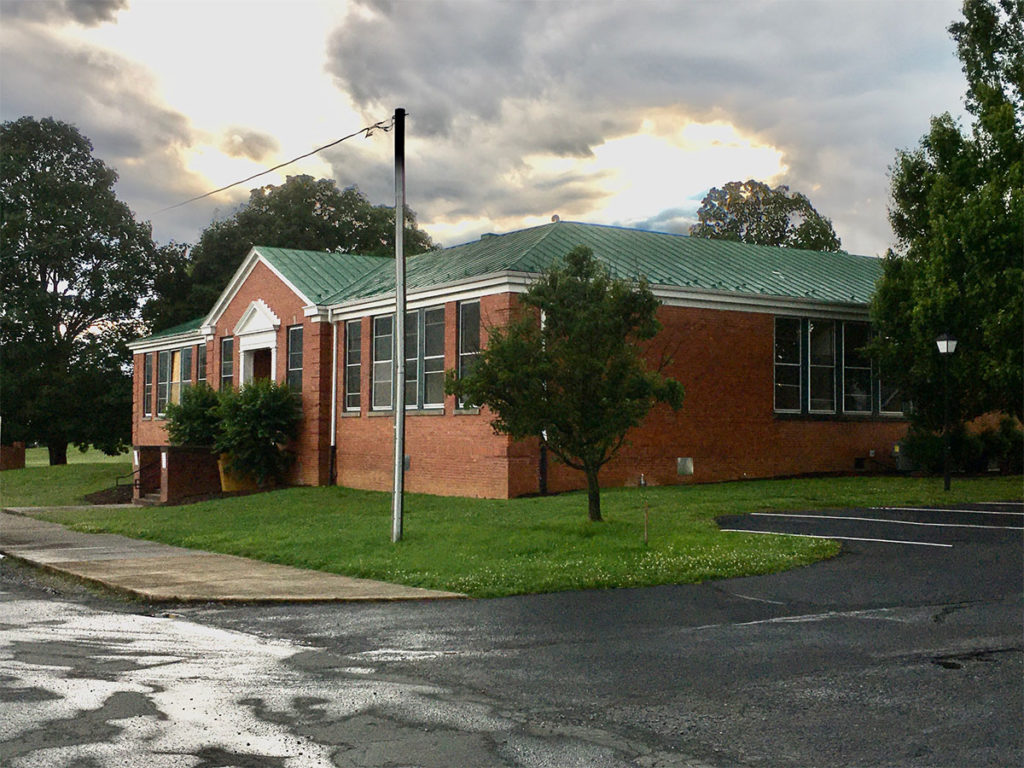As a Virginia state-chartered community bank, complying with the Community Reinvestment Act and providing fair lending opportunities is important to our tradition of caring for our communities. Through this initiative, we have participated in a multitude of projects that have revitalized low-income and underserved communities. The revitalization of Skyline Manor Apartments in Glasgow, Virginia was no different.
Skyline Manor Apartments Project Overview
Found on the National Register of Historic Places and the Virginia Landmarks Register, the former Glasgow Elementary School, built in 1939, was converted in 1995, to Skyline Manor Apartments – a 32-unit apartment building featuring 1 bedroom, 1 bathroom apartments for the low-income, senior citizen population.
After 25 years, it was clear that the building needed a complete rehabilitation of rental units. The developer received a $2.5 million allocation of Low Income Housing Tax Credits (LIHTC) through a competitive application process administered by the Virginia Housing Development Authority. In addition, the property qualified for federal and state historic tax credits. Because tax credit equity does not come at the time construction begins, the developer needed a bridge loan to finance construction costs. As part of our CRA and Fair Lending Program, Carter Bank & Trust stepped in and provided a bridge loan to get the project started. The project required the coordination of government agencies like the USDA and VHDA. This deal was Carter Bank & Trust’s first venture into LIHTC lending, which is quite different from the bank’s customary commercial real estate lending practices.
The project sponsor is a unique developer. The organization is a family-owned business that has been in the affordable housing business since 1982 and has grown to manage 4,000 housing units, mostly categorized as affordable, in nine states. Its niche is rehabilitating and converting historic structures in small underserved rural localities into affordable housing for low-income residents, leveraging the use of complex tax credit programs.
Senior VP & Director of Community Development Lending, Dawn DeHart collaborated with the project sponsor and its tax credit investors for 18 months, working through the project budget and various layered funding resources before the loan transaction could close. DeHart is responsible for managing the bridge/construction loan during the renovation stage and typically will make multiple site visits over the course of the renovation period to monitor construction and to coordinate with multiple project partners.

Sustainability in Affordable Housing
Developers, Landmark Asset Services, Inc., also partnered with Virdiant, (previously EarthCraft Virginia), to identify construction materials needed to achieve Gold Level Certification under the EarthCraft Multifamily Program. This level of certification requires the project to have an energy usage improvement of 30% and a minimum of 100 points on the EarthCraft Multifamily Program Workbook. This partnership played a critical role in assuring the environmental sustainability of the project.
While most wouldn’t expect a low-income housing rehabilitation to prioritize environmental sustainability, it was a main consideration for the Skyline Manor Apartments project. The property will be Gold Level EarthCraft certified and appliances are Energy Star rated. In addition, the developer selected green materials and natural resources which are not only more durable but contain fewer toxins and are recyclable. Features such as water-conserving faucets and improving heating and cooling insulation contribute to the sustainability of the property as well as the health of residents. Beyond the structure itself, landscaping plans were also planned with sustainability in mind, featuring native Virginia pollinators.
Affordable housing projects funded through low-income housing tax credits are rare in small rural communities like the Town of Glasgow. This rehab project not only provides housing for a vulnerable elderly population, but it also preserves an iconic historic structure essential to the community’s identity, provides upgraded amenities comparable to market-rate housing, and implements Earthcraft and Energy Star standards that will contribute to energy efficiency and ultimately lower maintenance and utility costs. Once placed in service, the developer has made a commitment to the residents that rents will not increase the year they move back into their apartments.
More Opportunities on the Horizon
While this is our first foray into LIHTC construction/bridge lending, we are encouraged by the relationships we have built with this developer, government agencies and tax credit investors. Because of this project, our management team now has more insight into administering this loan product. There are additional opportunities to finance other affordable housing projects with this project sponsor. Virginia and North Carolina publish a list of annual low-income housing tax credits awarded to for-profit and non-profit housing developers, and the bank can now be more active in its outreach to support a broad array of affordable housing projects across the bank’s primary market area.
The relationships forged in this project have provided a foundation on which our Community Development Lending team can continue to successfully participate in community reinvestments like this. Because of the coordination across public and private community resources, the rehabilitation was not only economically viable but advances the economic stability of the community it serves. It is able to provide housing to aging, low-income populations that would otherwise have nowhere to go, something every community needs. It is a need we intend to continue to fill.
Projects like this have shown success all over the country. While this was our first venture into lending in this way, it will not be our last. Our team is already reviewing the information available to find other projects to increase this area of our community lending program.
It is our goal to leverage this designation to build and expand the affordable housing portfolio across the bank’s footprint. Lending in underserved communities for critical needs such as housing contributes to economic development and is an essential component to creating vibrant and sustainable communities. Caring is what we’ll always do best.
Learn more about the community good Carter Bank & Trust has done by exploring our Community CARE blog category.
![]()
